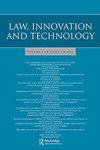Seeing the whole picture: visualising socio-spatial power through augmented reality
Q1 Social Sciences
引用次数: 7
Abstract
ABSTRACT Augmented Reality (AR) will have important effects on the ways in which spaces and places take meaning for both users and non-users of AR. As the market penetration of AR increases, new claims will be made on certain spaces, superimposing AR contexts on the meanings and functions traditionally associated with these spaces, not only by AR users but also by AR designers and service providers, raising important and complex questions about regulatory approaches to mitigating information and power asymmetries. A regulatory strategy that promotes civil society and individual privacy requires that we thoroughly consider the implications of AR on the construction of public and private space. We employ a mix of real and fictional AR scenarios to interrogate the potential effects of AR use and design on the construction of spatial meaning, the orientation of social relations, and distributions of social power, and we make initial recommendations for regulation to address AR’s possible negative effects.看到全局:通过增强现实可视化社会空间权力
摘要增强现实(AR)将对空间和场所对AR用户和非用户的意义产生重要影响。随着AR市场渗透率的提高,人们将对某些空间提出新的主张,将AR上下文叠加在传统上与这些空间相关的意义和功能上,不仅是AR用户,还有AR设计者和服务提供商,这就提出了关于缓解信息和权力不对称的监管方法的重要而复杂的问题。促进公民社会和个人隐私的监管战略要求我们彻底考虑AR对公共和私人空间建设的影响。我们采用真实和虚构的AR场景来探究AR的使用和设计对空间意义的构建、社会关系的取向和社会权力的分配的潜在影响,并提出了监管的初步建议,以解决AR可能产生的负面影响。
本文章由计算机程序翻译,如有差异,请以英文原文为准。
求助全文
约1分钟内获得全文
求助全文
来源期刊

Law, Innovation and Technology
Social Sciences-Law
CiteScore
4.50
自引率
0.00%
发文量
18
期刊介绍:
Stem cell research, cloning, GMOs ... How do regulations affect such emerging technologies? What impact do new technologies have on law? And can we rely on technology itself as a regulatory tool? The meeting of law and technology is rapidly becoming an increasingly significant (and controversial) topic. Law, Innovation and Technology is, however, the only journal to engage fully with it, setting an innovative and distinctive agenda for lawyers, ethicists and policy makers. Spanning ICTs, biotechnologies, nanotechnologies, neurotechnologies, robotics and AI, it offers a unique forum for the highest level of reflection on this essential area.
 求助内容:
求助内容: 应助结果提醒方式:
应助结果提醒方式:


